-
Plants, soils could exacerbate climate change as global climate warms
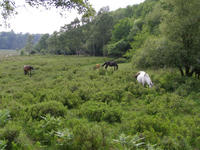
Scientists have demonstrated that plants and soils could release large amounts of carbon dioxide as global climate warms; this finding contrasts with the expectation that plants and soils will absorb carbon dioxide and is important because that additional carbon release from land surface could be a potent positive feedback that exacerbates climate warming
-
-
Sea-level records reveal tight correlation between ice volume and polar temperature

During the last few million years, global ice-volume variability has been one of the main feedback mechanisms in climate change, because of the strong reflective properties of large ice sheets. Ice volume changes in ancient times can be reconstructed from sea-level records; a new study has revealed a rapid response between global temperature and ice volume/sea-level, which could lead to sea-levels rising by over one meter
-
-
In Pennsylvania, the U.S. mecca of fracking, more scientific research is urged
Hydraulic fracturing or fracking is a controversial method to extract natural gas or petroleum from subterranean shale by using pressurized water to blast it open; proponents of fracking have noted its potential for helping the United States achieve energy independence while also stimulating the economy and creating jobs; these proponents have met stiff resistance from environmental groups that claim fracking can result in air and water pollution and have adverse human health effects
-
-
“Groundwater inundation” doubles previous predictions of flooding with future sea level rise
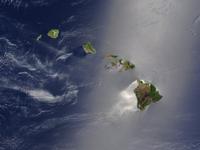
Scientists published a study today showing that besides marine inundation (flooding), low-lying coastal areas may also be vulnerable to “groundwater inundation,” a factor largely unrecognized in earlier predictions on the effects of sea level rise (SLR)
-
-
New tool for incorporating water impacts into policy decisions
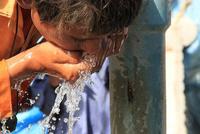
Just-released paper offers policy makers innovative framework for linking human well-being and water quality; a new tool helps in assessing and valuing the many services clean water provides — from recreation and beauty to navigation and hydropower — and incorporating them into policy decisions
-
-
Cleanup of most contaminated U.S. groundwater sites unlikely for many decades
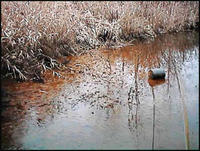
At least 126,000 sites across the United States have contaminated groundwater that requires remediation, and about 10 percent of these sites are considered “complex,” meaning restoration is unlikely to be achieved in the next 50 to 100 years due to technological limitations; the estimated cost of complete cleanup at these sites ranges from $110 billion to $127 billion, but the figures for both the number of sites and costs are likely underestimates
-
-
Sandy’s damage in New York State could reach $33 billion
Governor Andrew Cuomo said yesterday that the damage in New York state from Superstorm Sandy could reach $33 billion; a firm specializing in damage estimate had earlier estimated that Sandy might have caused between $30 billion and $50 billion in economic losses from the Carolinas to Maine; these estimates include property damage, lost business, and extra living expenses; Cuomo’s estimate, which are based on studies by experts in his administration, are likely push these figures higher
-
-
Cooler pavement materials could increase energy consumption in surrounding buildings
A push to replace old, heat-trapping paving materials with new, cooler materials could actually lead to higher electricity bills for surrounding buildings; the new paving materials are designed to lower the overall temperature of the areas where they are used
-
-
Future warming likely to be on high side of climate projections: analysis
Climate model projections showing a greater rise in global temperature are likely to prove more accurate than those showing a lesser rise, according to a new analysis by scientists at the U.S. National Center for Atmospheric Research (NCAR); NCAR says that the findings could provide a breakthrough in the longstanding quest to narrow the range of global warming expected in coming decades and beyond
-
-
Intensive farming with a climate-friendly touch
In the world of agriculture, climate protection and intensive farming are generally assumed to be a contradiction in terms; scientists have come up with a new land development concept that could change this view; the new model is tailored to medium-sized farms in South America and sees farmers transitioning from large-scale monoculture to more diverse crop mixtures spread over smaller plots interspersed with wooded areas — a switch that can bring significant financial benefits
-
-
Nor'easter batters NYC, New Jersey
A nor’easter battered New York and New Jersey on Wednesday with rain and wet snow, plunging homes back into darkness, stopping commuter trains, and inflicting yet more misery on thousands of people still trying to recover from Superstorm Sandy; ordinarily, the nor’easter would not pose major problems, but this was not the case yesterday, as the storm hit an area where electrical systems were still fragile and many of Sandy’s victims still busy cleaning their homes and coping with deepening cold
-
-
MIT researchers develop method to help communities plan for climate risk
As the devastation left by Sandy continues to reverberate, decision-makers at every level are asking: How can we be better prepared? MIT researchers developed a tool to assess regional risks of climate change and potential impacts on local infrastructure and planning; the tool helps policymakers, city planners, and others see the possible local effects of climate change, such as long-term temperature and precipitation changes, allowing local planners to evaluate risks, and how these risks could shape crops, roads, and energy infrastructure
-
-
The limitations of climate models
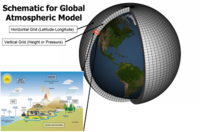
How accurate is the latest generation of climate models? Climate physicists have compared them with old models and draws a differentiated conclusion: while climate modeling has made substantial progress in recent years, we also need to be aware of its limitations
-
-
Scientists resurrect process to convert sugar directly to diesel

A long-abandoned fermentation process once used to turn starch into explosives can be used to produce renewable diesel fuel to replace the fossil fuels now used in transportation; the retooled process produces a mix of products that contain more energy per gallon than ethanol that is used today in transportation fuels and could be commercialized within 5-10 years
-
-
Inflatable giant plugs could have saved NYC subway system

Inflatable plugs being developed with funding from DHS, could have saved some of New York’s subway and highway tunnels from flooding during Hurricane Sandy, according to the developers of the plugs; DHS successfully tested a plug earlier this year, using a 16-foot diameter prototype to hold back pressurized water at a test tunnel in Morgantown, West Virginia; the idea was originally intended to protect tunnels from terrorist attacks
-
- All
- Regional
- Water
- Biometrics
- Borders/Immig
- Business
- Cybersecurity
- Detection
- Disasters
- Government
- Infrastructure
- International
- Public health
- Public Safety
- Communication interoperabillity
- Emergency services
- Emergency medical services
- Fire
- First response
- IEDs
- Law Enforcement
- Law Enforcement Technology
- Military technology
- Nonlethal weapons
- Nuclear weapons
- Personal protection equipment
- Police
- Notification /alert systems
- Situational awareness
- Weapons systems
- Sci-Tech
- Sector Reports
- Surveillance
- Transportation
Advertising & Marketing: advertise@newswirepubs.com
Editorial: editor@newswirepubs.com
General: info@newswirepubs.com
2010-2011 © News Wire Publications, LLC News Wire Publications, LLC
220 Old Country Road | Suite 200 | Mineola | New York | 11501
Permissions and Policies
Editorial: editor@newswirepubs.com
General: info@newswirepubs.com
2010-2011 © News Wire Publications, LLC News Wire Publications, LLC
220 Old Country Road | Suite 200 | Mineola | New York | 11501
Permissions and Policies
